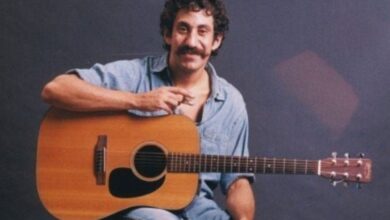The Charm of Patsy Cline Shines in “Crazy”
“Crazy” is an iconic country ballad that has captured the hearts of listeners for decades. Written by the legendary Willie Nelson, the song was crafted during a fruitful period when Nelson was not only establishing himself as a prominent songwriter but was also navigating his own artistic journey. His ability to weave poignant narratives into song lyrics made him a compelling figure in the music world. Although Nelson originally penned “Crazy” for himself, it was Patsy Cline’s rendition in 1961 that propelled the song into the musical pantheon, solidifying both her legacy and the song’s lasting influence across genres.
The lyrics of “Crazy” evoke a powerful narrative of unrequited love, centering on the heartache felt by someone still emotionally tethered to a partner who has moved on. This dichotomy of wanting to let go while being unable to sever the emotional connection is depicted through vivid lines that embody deep sorrow and yearning. The skillful construction of these lyrics allows listeners from various backgrounds to find commonality in their own romantic struggles, bridging generational gaps and ensuring that the song resonates with anyone who has faced similar emotional turmoil. This broad appeal is a testament to the song’s craftsmanship, making it a timeless piece that continues to be celebrated and reinterpreted by artists from all walks of life.
Patsy Cline’s interpretation of “Crazy” stands out as a remarkable achievement in vocal artistry. Her unique vocal delivery harmonizes raw emotionality with technical prowess, allowing her to effectively convey both vulnerability and strength. The arrangement of the song complements Cline’s haunting voice, featuring rich orchestration that amplifies the sorrowful essence of the lyrics. The lush string arrangements, combined with gentle piano passages, create an atmosphere that feels intimate yet expansive, inviting listeners into the complex emotional world of the song’s narrator. Through her passionate performance, Cline transformed “Crazy” from mere lyrics into a profound exploration of heartbreak, enabling audiences to connect with the song on a visceral level.
Despite its eventual success, “Crazy” initially faced numerous challenges in the music industry. Record executives were uncertain about its commercial prospects, resulting in a delay in its release. However, Cline’s determination and the vision of her producer ultimately led to its debut as a single. After its release, “Crazy” became a major hit, topping the country charts and even crossing over to the pop charts, solidifying Cline’s reputation as a versatile and impactful artist within the broader landscape of American music.
The tragic end of Patsy Cline’s life in 1963, due to a plane crash, adds a layer of poignancy to “Crazy.” Cline was only 30 years old, and her untimely death was a devastating blow to the music community. Though she did not live to witness the enduring impact of her music, her recordings continue to be cherished, influencing generations of singers and songwriters. In the decades following her passing, “Crazy” evolved beyond being just a hit; it became a cornerstone of Cline’s legacy, symbolizing her lasting contributions to music and culture.
Willie Nelson later recorded his own version of “Crazy,” showcasing the song’s remarkable versatility. Nelson’s rendition presents a more laid-back and conversational delivery, infused with his signature country sound. This version illustrates how “Crazy” can inhabit various artistic expressions while maintaining its core emotional depth. The success of both Cline and Nelson with the same song highlights the strength of the song’s composition and its adaptability to different musical styles, resonating with diverse audiences.
Over the years, “Crazy” has attracted an array of covers from artists spanning multiple genres, including pop, rock, jazz, and even blues. Notable renditions by artists such as Linda Ronstadt and Diana Krall reveal the song’s versatility and the deep array of emotions it can convey. Each reinterpretation offers a fresh perspective, while all acknowledge the profound emotional weight carried within the original lyrics. This phenomenon reflects the timeless quality of the songwriting, speaking to the enduring and relatable themes that artists continue to explore.
In contemporary culture, “Crazy” remains a staple, featured in modern media, films, television shows, and various tributes to Patsy Cline. Its presence in these platforms introduces new generations to the song, allowing them to discover its beauty and significance. Moreover, “Crazy” has become a popular choice in the performances of aspiring singers and seasoned artists alike, frequently serving as a showcase for their vocal talents and emotional range. This ongoing relevance underscores the public’s fascination with the complexities of love and heartache.
Beyond its artistic legacy, “Crazy” stands as a significant touchstone in the history of country music, exemplifying the genre’s storytelling prowess. The song illustrates how country music can delve into intricate human emotions with authenticity and sincerity. This lyrical depth and emotional honesty ensure that “Crazy” remains an essential part of the country music canon, emblematic of both pain and the enduring power of love, deftly capturing the human experience.
As time passes, the song “Crazy” continues to weave itself into the fabric of American music, encapsulating a moment of vulnerability that resonates universally. Its poignant message of love, loss, and nostalgia highlights a shared human experience that transcends boundaries. In essence, “Crazy” is more than just a song; it is a powerful narrative that speaks to the heart, creating connections between the past and present while securing its place in the annals of musical history. The legacy of “Crazy,” bolstered by the indelible performances of Nelson and Cline, ensures that it will continue to inspire and move listeners for generations to come.



